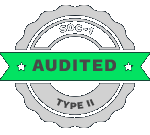Given the rise of personalized products and services in the online marketplace, it’s no wonder that user-centered app design is on everyone’s mind. The challenge, however, is not in choosing user-centred design, but actually putting it into practice.
If you’re curious to find out how this concept drives real value to your business, here’s a crash course on the Do’s and Don’ts of this phenomenon in app development.
DON’T: Skip the research. User-centred design is all about creating a product that is specifically tailored to the needs and pain points of your users. This makes it crucial to find out where they’re coming from, what their goals are, and how best to achieve those goals. A great place to start is simply ask users to send in problems they have with their current software, be it yours or a competitor’s. Through their responses, you’ll be able to derive trends in complaints and understand what their pain points might be. By this point, you should be in the stages of defining your app rather than building it. Continue to adjust your plans as you glean insights from the consumer research. Remember to focus on what your app will be able to do for your target demographic; user-centred is not meant to be everything for everyone. Rather, it aims to achieve a specific purpose and achieve that purpose well.
DO: Create a user persona. The next step is to create a user persona and determine what that user’s typical day looks like. The aim of user personas is to use the research you collected to answer fundamental questions about the user, such as:
-
Who are your users?
-
What features would be essential to their in-app experience?
-
When do they interact with your online products? How much time do they currently spend with them?
-
Where do they access apps and online services? What devices do they use?
These questions will help you analyze behavioural information as it is relevant to your end user’s interactions with the app, which will guide any and all UI/UX decisions you make. Keep in mind that If you have more than one user persona, these questions must be answered for each user group.
DON’T: Forget to prioritize. Now it’s time to start crafting the user experience. The main thing to remember here is that your ultimate goal should balance the company’s needs as well as the user’s. All the insights you gained from the previous two tips may lead you to form the ideal consumer experience, but you must also factor in modifications and additions that deliver business results.
BluEnt specializes in building enterprise applications to deliver a meaningful experience not only for end users, but for our clients as well. We have years of experience in facilitating the buyer-seller relationship through app development and always keep our clients’ end goal at the forefront of our designs.
Another way to interpret this tip is to pace yourself throughout the product life cycle. Creating too much complexity early on may overwhelm consumers and facilitate user abandonment. Instead, don’t be afraid to save some of your ideas for future updates and expansions. This will also help you hone the experience with more skill as you learn about the user from release to release.
DO: Create customer journey maps. User retention is a huge concern when it comes to app development, and user-centred design is the perfect way to improve these metrics. The reason is that the development of user profiles naturally helps you build effective journey mapping, which makes for effective UX and reduced abandonment.
For each user persona, an end goal can be selected and paths to that end goal can be generated. This is critical from a design perspective in that it defines the app’s structure and general user flow. As you get more feedback from users, you can get a better understanding of how these maps are being received and optimize the journey.
DO: Test out ideas. When designing, it’s important to brainstorm constantly. Assemble all the data you will include in the app in a myriad of documents and panels to try out different methods of navigation to link from one to the other. This begins the wireframe & prototype designing stage in which the structure of the app really begins to come into fruition. Consult your journey maps to figure out what actions need to take place to get users from point A to point B, consciously attempting to simplify and streamline all the different journeys that have been laid out. The goal here is to get the user where they want to go with the least amount of effort.
At BluEnt, we focus on creating clean, contemporary design and structured flow to create the optimal ease of navigation. We work with our clients to create the best experience for their users and deliver professional results in a cost-effective way to maximize the value of each app we produce.
DON’T: Ever say the app is finished. Everyone one of these tips is not meant to be carried out only once – they should be approached as a cycle. It’s important to adapt your user personas and your users themselves evolve, create new and better journey maps, and to test them out with updated UI designs.
Not only does this keep your app up-to-date with the latest trends, it also lets to discover which of your initial working assumptions were unproductive. Wherever possible, ask for feedback from users and incorporate them in new iterations as soon as possible. This process is a never-ending mission to create the most effective app possible, which at the end of the day, is that user-centred design is all about.
We hope this article gave you some insight into the latest craze in app development. To discuss your software application needs or to get a demo of our custom applications, fill out a form today.
Maximum Value. Achieved.



 How Much Does App Development Cost? A Budget Estimation Guide
How Much Does App Development Cost? A Budget Estimation Guide  Using Angular to Develop Mobile Apps Can Be a Game Changer for Your Business
Using Angular to Develop Mobile Apps Can Be a Game Changer for Your Business  Pros and Cons of the WooCommerce Plugin for Online Merchants
Pros and Cons of the WooCommerce Plugin for Online Merchants  Mean Stack vs LAMP Stack: Which One is Better for Your Business?
Mean Stack vs LAMP Stack: Which One is Better for Your Business? 
